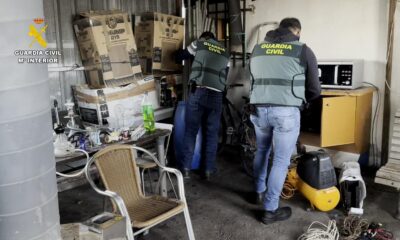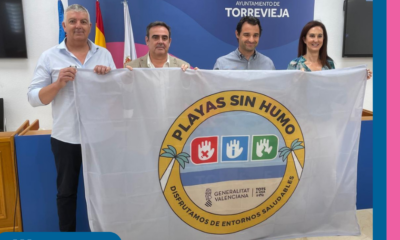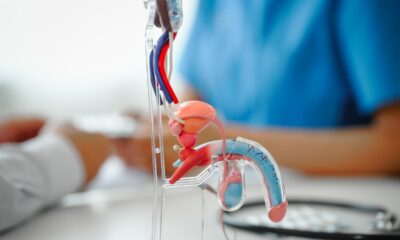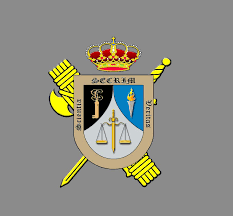

Health
Eight out of ten melanomas are curable if detected early
- Patients who already have melanoma are more sensitive to suffering a second one, as well as the immediate relatives of these patients, who must follow strict control
- Thanks to Teledermatology, Quirónsalud specialists offer a diagnosis in less than forty-eight hours
According to the Spanish Association Against Cancer, skin cancer already accounts for 8% of the total number of tumours diagnosed, a figure that is increasing and whose registration has increased by 40% in the last 4 years.
The most common type of skin cancer is basal cell carcinoma (BCC). This type of cancer accounts for about 80% of all non-melanoma skin cancers. It develops in the basal cells, which are the cells in the deepest layer of the epidermis. It usually appears as a small, shiny bump on the skin, often on sun-exposed areas such as the face, neck, and hands. It can also present as a non-healing sore, a red patch, or a scar. However, we can find up to more than 100 types of skin cancer. “We could say that basal cell carcinoma, squamous cell carcinoma and melanoma are the most frequent, in this order,” explains Dr. Lisset Sardá, head of the Dermatology Service at Quirónsalud Alicante.
Melanoma originates in melanocytes, cells that produce the pigment melanin responsible for skin colour. Although it is less common than other types of skin cancer, it is much more dangerous due to its ability to spread to other parts of the body, that is, to metastasize, although as Dr. Sardá points out, “more than 80% of this type of cancer is curable as long as it is detected in time”.
Symptoms of melanoma, the most dangerous skin tumour
Among the main symptoms of melanoma are changes in the size, shape or colour of a mole, the appearance of new growth on the skin, the sensation of itching, pain or bleeding of a mole. “These symptoms should alert us and bring them to the attention of a specialist as soon as possible,” advises Dr. Sardá.
Risk factors for skin cancer
In relation to the behaviours that increase the probability of developing melanoma, the head of the Dermatology Service at Quirónsalud Alicante points out that sunburns during childhood and adolescence are the most linked to melanoma. In addition, people who use ultraviolet tanning booths have a 20 times higher risk of developing this type of cancer over the course of their lifetime. “We know that the lighter the colour of the skin, hair and eyes of patients, the less ability they have to defend themselves from ultraviolet radiation and develop melanoma more easily, with red-haired individuals being the most at risk. On the other hand, patients who already have melanoma are more sensitive to suffering a second one, as well as the direct relatives of these patients, who must follow strict control,” says Dr. Sardá.
To detect it, Quirónsalud specialists advise following the rules of the ABCDE, an acronym that refers to the asymmetry of this type of lesion, irregular borders, heterogeneous colour and a diameter greater than six millimetres, although the most important is E, its evolution: any change in a mole must be assessed by a dermatologist.
Early diagnosis of skin cancer in Alicante and Torrevieja thanks to Teledermatology
The main advantage offered by the Teledermatology services of Hospital Quirónsalud Torrevieja and Quirónsalud Alicante is the short period of time that elapses between the consultation and the diagnosis of the specialist, which allows it to be addressed as soon as possible in the event of suspected malignancy and to apply the necessary treatment to guarantee a higher cure rate.
The patient is seen in an initial consultation with health personnel trained in dermoscopic techniques which includes a report on the skin lesions and their evolution, as well as important data such as history, risk factors, etc. After this consultation, the specialist will take images using dermoscopic technology that are sent to the dermatologist, who will issue his diagnosis in less than forty-eight hours.
In case of doubt or suspicion of malignancy, the patient will be contacted as a priority and will be offered a face-to-face appointment in less than two days, in which the specialist will explain their case and the procedure to be followed.
-

 Around Spain2 weeks ago
Around Spain2 weeks agoBoth Main Political Parties Increase Vote Share but Lose Votes in Torrevieja
-

 News1 week ago
News1 week agoIKEA building refugee support plan
-

 Crime and Policing2 weeks ago
Crime and Policing2 weeks agoCriminal group dedicated to cocaine trafficking dismantled
-

 Environment and Weather2 weeks ago
Environment and Weather2 weeks agoRain increased by 2 percent





















